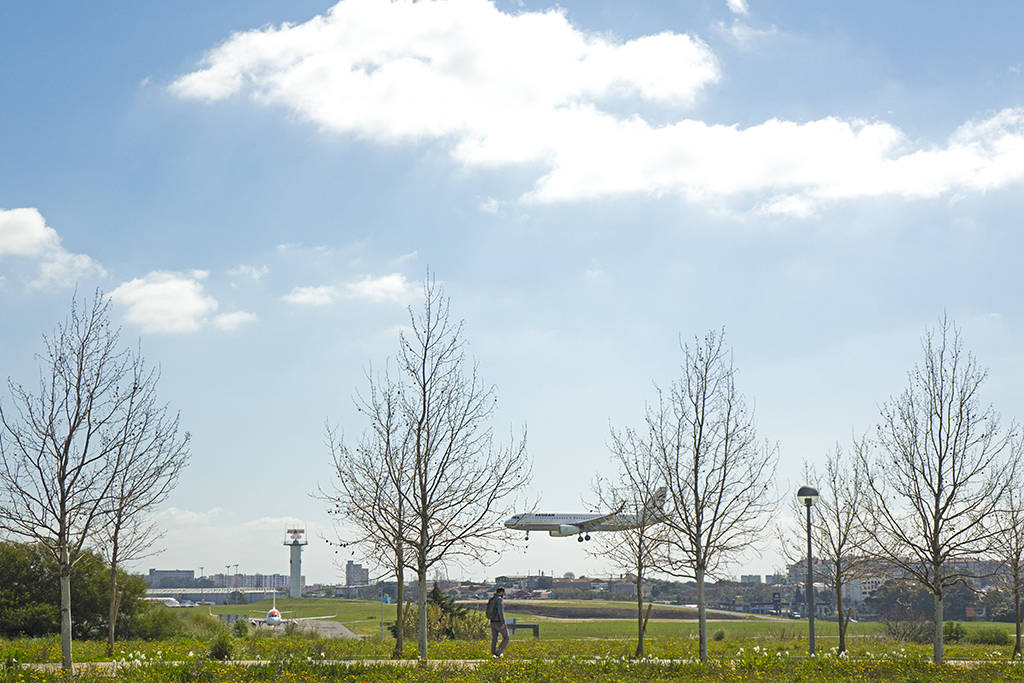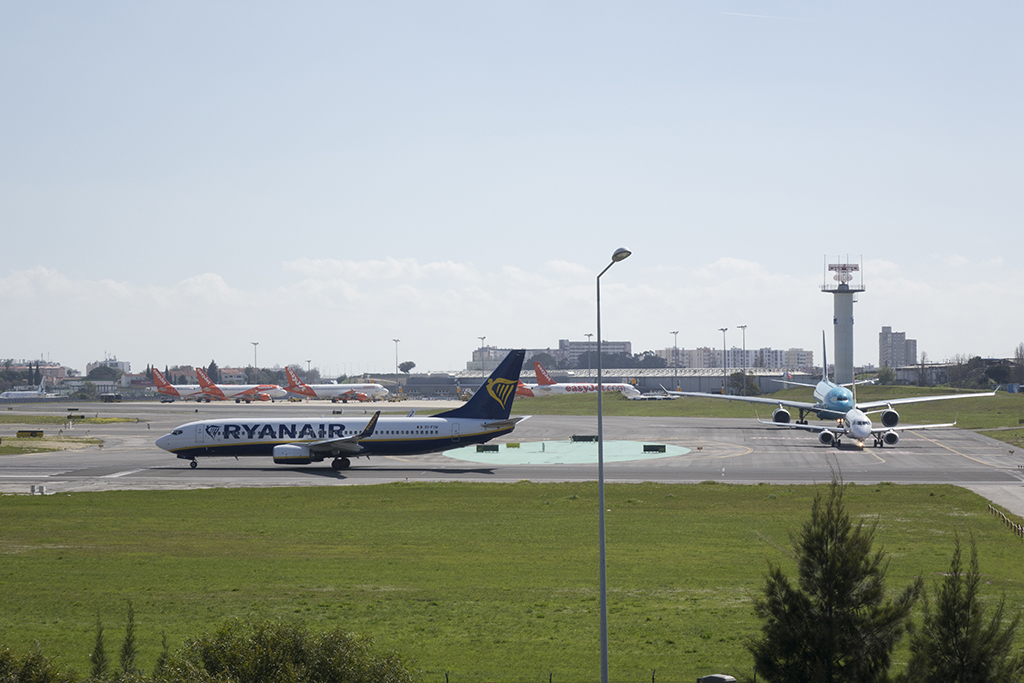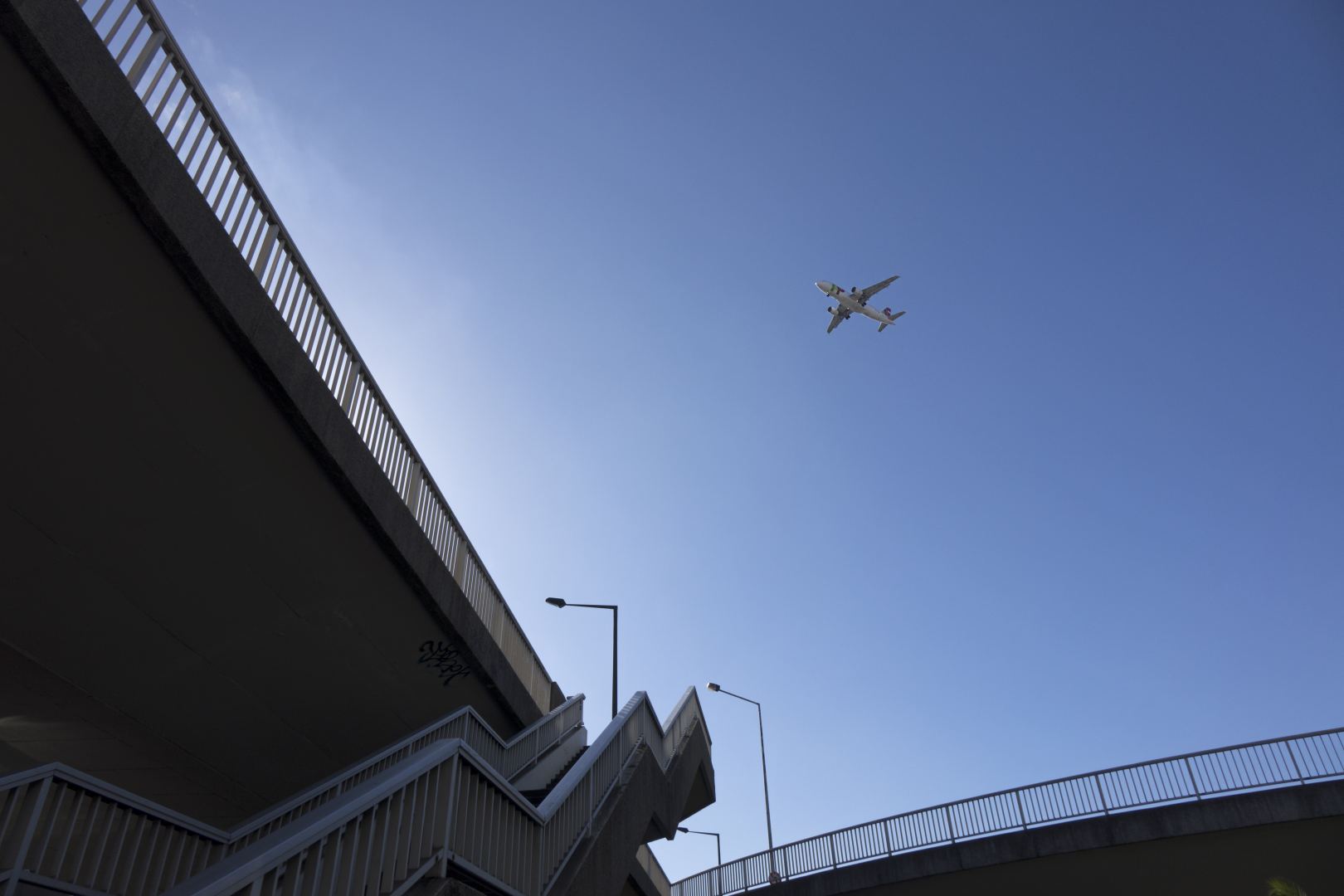Portugal’s flourishing tourism boosted by low-cost airlines
With 21 million tourists flocking to Portugal last year, business is booming for airline companies.
Portugal’s ongoing popularity as a tourist destination is evident and record visitor number are proof of this — 21 million tourists in 2017 (+8.9% on 2016), and even more are expected this year.
Secretary of State for Tourism Ana Mendes Godinho explains this is the result of a targeted effort from several governments over the past 10 years and which is now bearing fruit.
Without a doubt, the entry of low-cost airlines Ryanair and easyJet into the market has played an important part in bringing more tourists to Portugal.
Michael O’Leary, CEO of Ryanair, says: “The boom is partly down to Ryanair and if Montijo (airport) opens in 2019, we will overtake TAP within two years.”
The Irish carrier expects a 6% in- crease in passenger traffic to Portugal on its planes by the end of 2018 — a large part (3.5 million) to Lisbon’s over- stretched Humberto Delgado Airport at Portela, which in 2017 carried 26 million passengers.
This year, Ryanair expects to carry 4.4 million passengers to Porto, 2.6 million to Faro and 500,000 to Ponta Delgada and Terceira on the Azores.
Ana Mendes Godinho says routes are diverse and fly to all the national airports (Lisbon, Faro, Porto, Azores and Madeira). “By the summer of 2018, we will have 104 new airline routes to Portugal.”
Airlines from Canada, the United States and Finland, for example, are also opening new routes to Portugal. These include direct flights from Porto to Toronto operated by Air Canada Rouge, and US carrier United Airlines will start direct flights from Porto to New York (Newark).
Greek airline Aegean will introduce two weekly flights between Porto and Athens between June 6 and October 13.
Finnair is starting flights to Helsinki, while Aeroflot will operate new flights to Moscow. Another US carrier, Delta Airlines, will begin five flights weekly between Ponta Delgada in the Azores and New York’s JFK, while Ryanair will now offer a flight from Ponta Delgada to Manchester.

Aeroplane lands at Lisbon airport
CAN LISBON’S AIRPORT COPE?
The introduction of the €18 million Terminal 2 at Humberto Delgado in 2007, serving low-cost airlines easyJet, Norwegian, Ryanair, Transavia, Blue Air and Wizz Air, was the beginning of a patch-and-mend policy by the govern- ment to keep Lisbon’s airport operating while discussions went on about the size and site for a new international airport.
The existing outdated and over- stretched facilities, which celebrated 75 years in 2017, were modernised in a €30 million improvement plan in 2015. In 2016, nearly €100 million was ear- marked for an ambitious airports expan- sion plan, with €55 million for Porto’s Sá Carneiro, €25 million for Faro airport and €11 million for Madeira.
The Lisbon improvements doubled the departures, arrivals and commercial space by 2015 to include a new passport control area, a security zone for transfers, more departure gates, a larger baggage collection hall and a shopping and waiting area (Praça de Lisboa) with a 2000m2 area for 17 new shops, increasing retail sales to over €15 million per annum. The airport also benefitted from a new metro station directly into Terminal 1 departures on the Oriente (red) line.
In 2012, the concession for ANA- Aeroportos de Portugal, which runs 10 airports nationwide, was sold to the French Vinci Group on a 50-year con- cession worth €3.083 billion. With tourist numbers rising, the urgency to find a viable alternative has intensified over the past few years. The Secretary of State for Tourism admits that, with Lisbon airport already saturated, “we have tried to encourage the markets to consider other airports such as Faro and Porto”.
Ana Mendes Godinho stresses the increase in revenues from tourists from China (+80%), Russia (+60%) and Canada (+32%) – “markets where air routes are growing, bringing tourists and their money to Portugal”. The president of Turismo de Portugal (national tourism board), Luís Araújo, said in February that “efforts to attract new routes had been made with ANA- Aeroportos de Portugal to promote all airports aggressively, with the idea that due to the relatively short distances involved within the country, mainland destinations are just as easily reached from Porto or Faro”.

Ryanair airplane at Lisbon airport
CALLS FOR NEW AIRPORT
After years of debate and public consultation as to whether Rio Frio or Ota (Alenquer) would be the place to build the new airport, a new location was pro- posed in Alcochete and won. The site was deemed more accessible given the good infrastructure nearby, such as the Vasco da Gama bridge, and was con- firmed by the Portuguese government in 2008. The estimated cost of the project was €4.9 billion and preliminary works began in late 2010.
However, the financial crisis and collapse of the Socialist PS government led by José Sócrates put the project on ice. In 2017, debate centred on a new alternative site for an airport specifically for low-cost airlines, this time at Montijo near Lisbon, on land which will be leased from the Portuguese Air Force. One of the strongest and most powerful voices calling for the new airport is David Neeleman, who owns 45% of Portugal’s national carrier TAP Portugal.
Last year, during a visit to Lisbon, the airline mogul, who has founded four commercial airlines — Morris Air, Westjet, JetBlue Airways and Azul Brazilian Air- lines — and whose Gateway Consortium bought the share of TAP in June 2015, said the new airport was “imperative as the facility at Portela could no longer deal with current levels of air traffic”.
“We need a new airport now. We can’t wait five years. A terminal equivalent to Terminal 2 at Portela could be built in six months, so we could have something up and running in two years,” he told members of various European chambers of commerce in Portugal. But while he welcomed low-cost carriers and admitted there was space in the market for both low-cost and ordinary commercial airlines, the executive made it clear that “everyone should pay for their own airport”.
“I’m not paying for Ryanair to come here and take away our business and provide them with an airport to boot. No one should accept this!” he added.
David Neeleman, who owns Atlantic Gateway (Gateway Consortium), said TAP was focused on paying off €600 million worth of debt as from November 2018 in monthly instalments of €10 million. He also said he believed TAP could end the year in profit but admitted that “we have to lower costs and become more efficient. The lack of a suitable airport is our main challenge. When passenger numbers grow by 25%, the infrastructure needs to keep pace. There are people who want to visit Portugal and we have to say ‘no, Portugal is closed between such and such an hour’, because there’s no capacity at the airport in Lisbon to process them. There are hours of the day when flights are grounded because of lack of slots the other end.”
One suggested resolution is to extend landing and take-off operational hours at Humberto Delgado airport throughout the night. It is a measure that is opposed by various residents’ associations and Lisbon Mayor Fernando Medina.
In March, the mayor assured residents in the parishes of Areeiro and Alvalade that he was “dead against” extending operational hours at night, to cope with the influx of tourists, saying it wasn’t “fair to expect Lisbon residents to suffer the effects of noise pollution”. On the question of this and the need for a new airport, Neeleman says that the government, TAP and the Portuguese airports authority ANA “need to work together to resolve the problem”.
“We know there are negotiations underway with the Air Force to lease Montijo,” he continued. The airline mogul said that TAP was considering opening new routes to Chicago and San Francisco with the goal of making the most of partnerships with JetBlue.

Lisbon airport
AMERICAN SEDUCTION
United Airlines, too, has seized the business opportunity from increased demand between the United States and Portugal.
United will be expanding its services to and from Portugal with the introduction on May 5 of a new nonstop seasonal flight between Porto and New York/Newark. United spokesperson Gudrun Gorner said: “Operating daily throughout the summer, the new flights will supplement the existing Lisbon to New York/Newark service and our summer seasonal service from Lisbon to Washington/Dulles – offering more options for United customers in Portugal to conveniently connect to more than 150 North American cities with just one stop from either of our hubs at New York/Newark or Washington/ Dulles.
“Whilst we are not able to disclose market specific figures, what we can say is that the performance of our routes is in line with our expectations. The introduction of the new seasonal service from Porto to New York/Newark underlines the importance of the Portuguese market for United,” she adds.
TAP, too, is increasing its routes to the United States. “With the new Airbus A330-900 and A321LR coming on line in the next few years, TAP will continue to expand not only to more large routes like Toronto, but also to thinner routes like Montreal, or even Baltimore or Hartford in the US. And while we don’t like to name too many new routes, I fully expect that we will double our North American service over the next five years,” concludes TAP’s David Neeleman.









